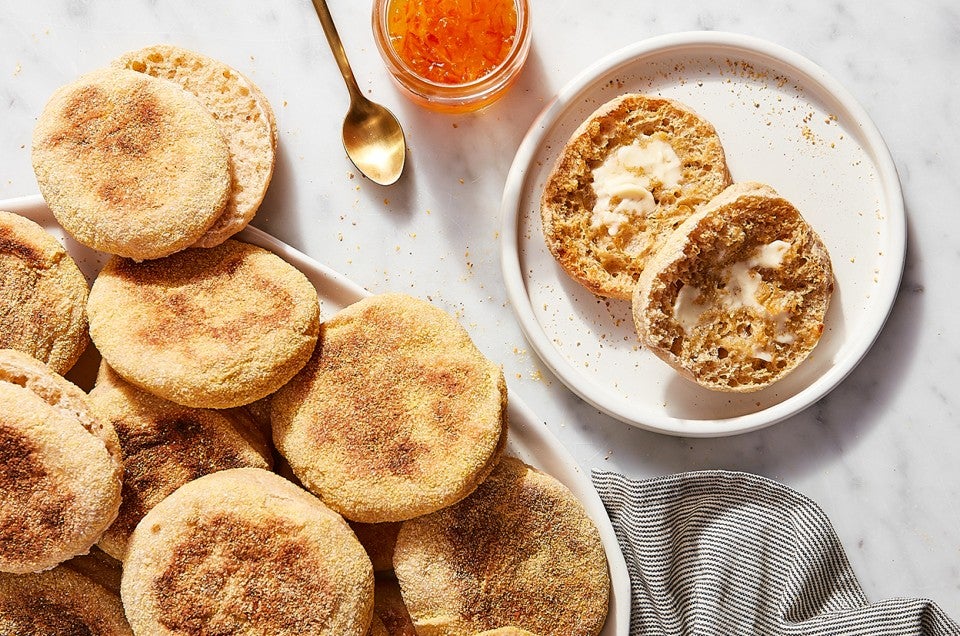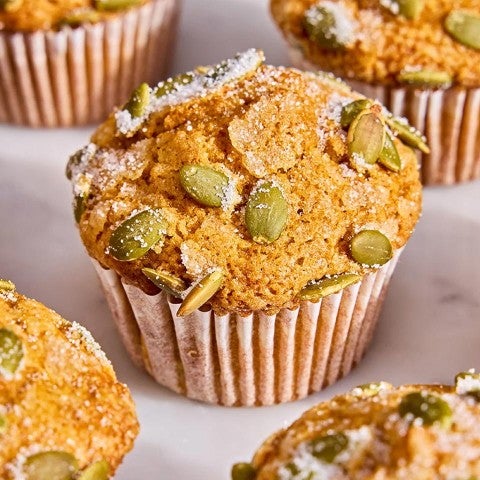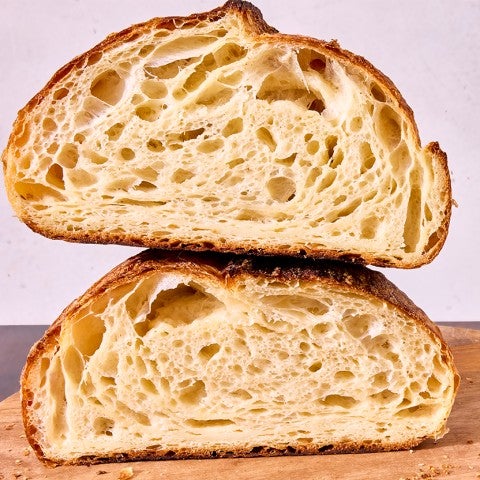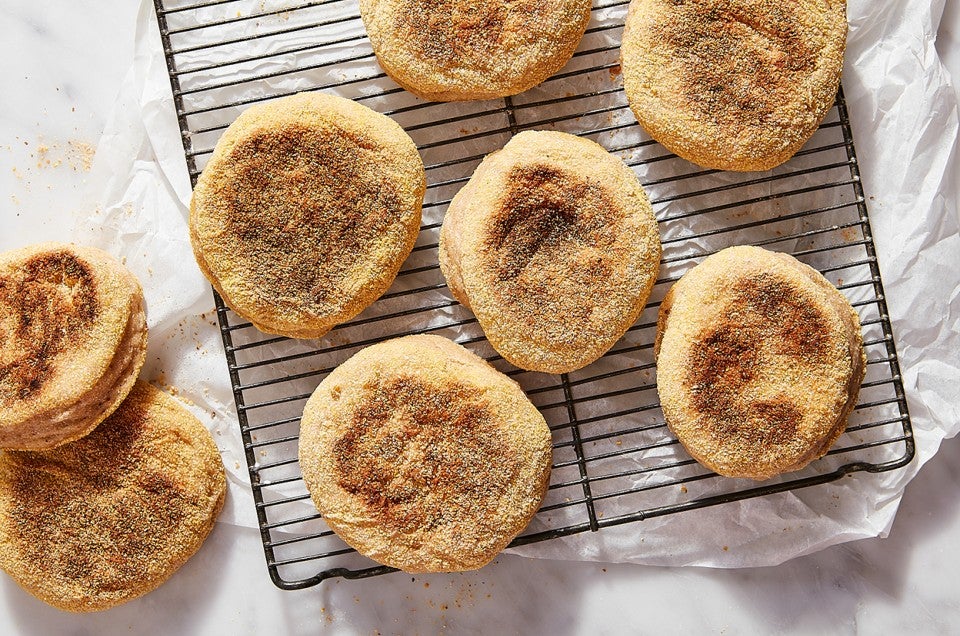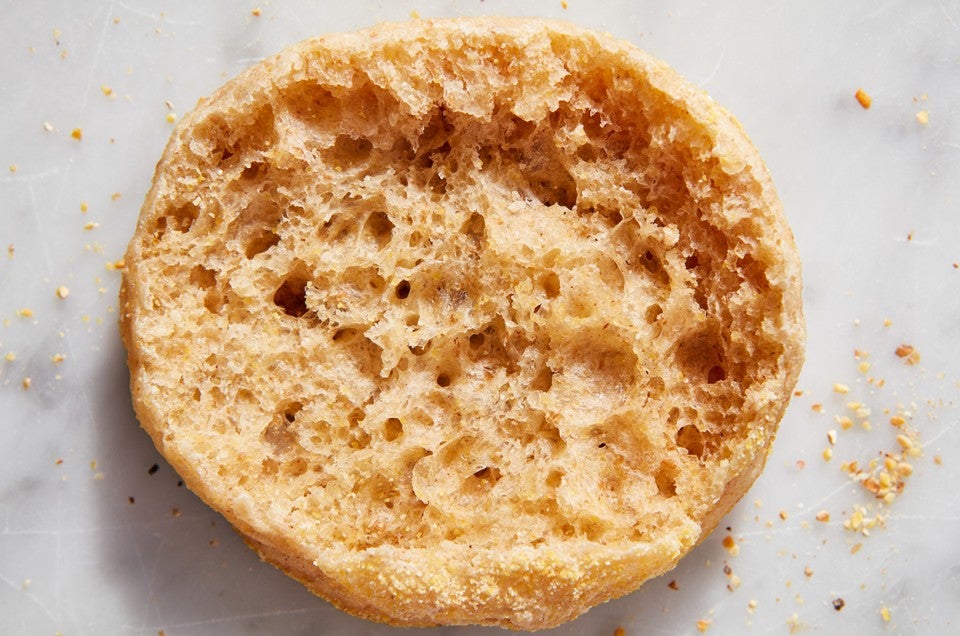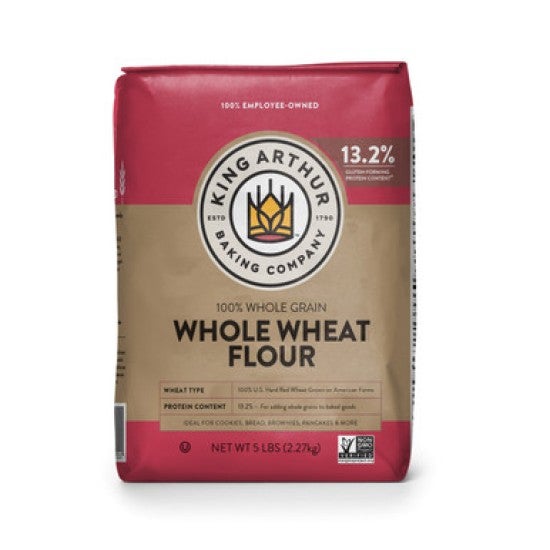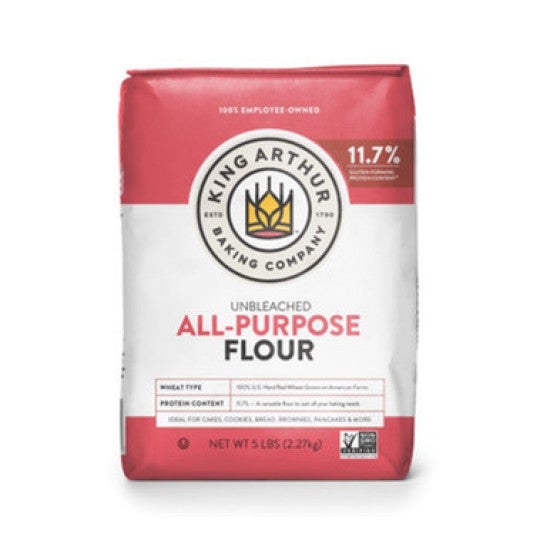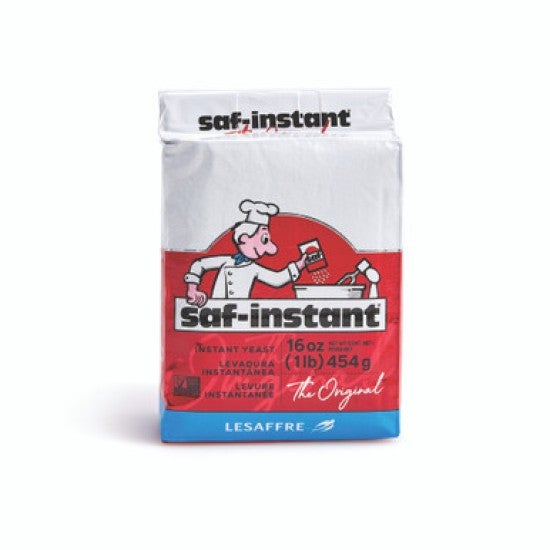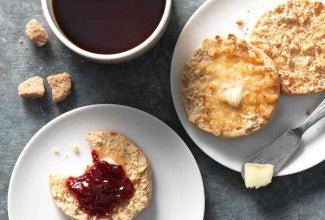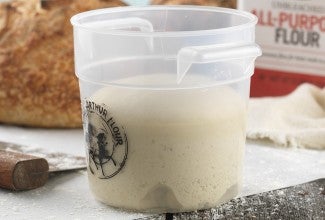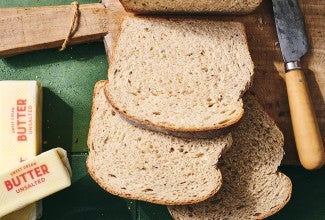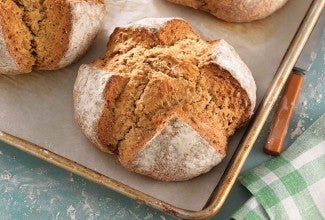-
To make the starter: For best results, weigh your flours; this recipe was developed by metric weight. However, if you prefer to work with volume measurements, please be sure to measure your flour the King Arthur way: gently spoon the flour(s) into a cup, then sweep off any excess. In a large bowl, mix the starter ingredients thoroughly. Cover the bowl and set aside to rest at room temperature for 12 to 18 hours (overnight works well).
-
To make the dough: Add the dough ingredients to the bowl with the rested starter, mixing with a bowl scraper or spatula.
-
Once you’ve made a shaggy, cohesive dough, run the scraper or spatula down the inside far wall of the bowl, bring the dough up from the bottom of the bowl, and fold it over on top of itself. Quickly repeat 20 to 25 times, rotating the bowl with each stroke so you’re always working on a different portion of the dough.
-
Cover the bowl and let the dough rise (ferment) for 2 hours. Every 30 minutes repeat the same “folding” process described above, giving the dough about 20 to 25 strokes each time.
-
Transfer the dough to a lightly greased 9" x 13" pan and cover. (If you don't have a 9" x 13" pan, use a wide, shallow bowl instead.) Let the dough rise for about 1 hour at room temperature, and then chill in the refrigerator for 10 to 24 hours; this will develop its flavor even more.
-
To cut the muffins: Turn the dough out onto a work surface dusted with 45g (a generous 1/4 cup) cornmeal.
-
Sprinkle an additional 45g (a generous 1/4 cup) cornmeal on the dough’s top surface. If you've let the dough rise in a bowl, gently stretch it into a rectangle roughly 9” x 13".
-
Cover the dough and let it rest for a few minutes, to relax the gluten.
-
Pat the dough gently so it's an even thickness all over. Don't use a rolling pin, as this can deflate the nooks and crannies.
-
Cut the dough into 3" to 3 1/2" rounds; greasing the cutter will help with any sticking.
-
Gather, gently squeeze together, and pat out your scrap dough. Let it rest for a few minutes to relax the gluten, then cut more muffins. This second batch of muffins will need more time to "relax” after cutting, so griddle them after you do the first batch. Note: To cut square muffins (and avoid having to deal with scrap dough) see "tips," below.
-
To shape the muffins without cutting: Alternatively, instead of shaping the dough into a rectangle and cutting out circles, divide it into 12 pieces, about 80g each. Shape each piece into a round ball, then flatten each ball into a 3" round.
-
To finish and cook the muffins: Space the muffins on a cornmeal-sprinkled baking sheet. Sprinkle them with additional cornmeal, cover, and let them rise until light and puffy, about 60 to 75 minutes.
-
Carefully transfer the rounds (as many at a time as will fit without crowding) right-side up to a large electric griddle preheated to 350°F, or to an ungreased frying pan preheated over medium-low heat.
-
Cook the muffins for about 8 to 10 minutes on each side. The edges may feel a bit soft; that's OK. If you're having trouble getting muffins to cook all the way through on the stove top, cook until golden brown on both sides, then transfer to a preheated 350°F oven and bake until the muffins' interior shows no sign of wet dough, about 10 minutes or so.
-
Remove the muffins from the griddle (or oven) and transfer them to a rack to cool.
-
Enjoy warm; or cool to room temperature, then split with a fork or an English muffin splitter (to preserve the nooks and crannies) and toast.
-
Storage information: Store muffins, well wrapped, at room temperature for four or five days; freeze for longer storage.
